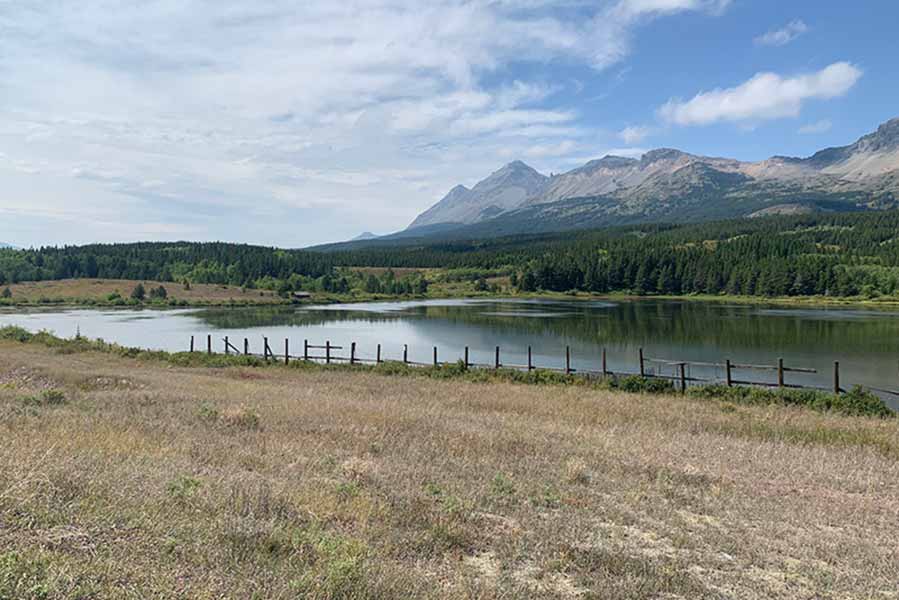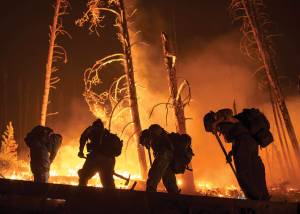By Alanna Ober
“If these walls could talk?” How many times have you pondered this open question? Since retiring, my husband and I have spent the last decade exploring Montana. Eastern Montana is dotted with the stark remains of structures decaying in the sun, wind, snow, and rain; evidence of the Homestead Act of 1862. Hardship is etched into the scene. That same year, Congress passed the Pacific Railway Act. The goal was to fund and promote the expansion of railroads across western lands. The backdrop promise promoted by the Great Northern Railroad on colorful printed pamphlets: “Montana Free Homestead Land.” Catchy slogans encouraged westward expansion: “Go West! Claim land and create a homestead on a 160-acre section for five years, and it is yours free and clear!” This historic event was brought into our consciousness anew after my husband read a fascinating book: Dream Chasers of the West by B.L. Wettstein. Though the title is plural, it is really about a central figure: Clara Augusta Miller arrived in Rudyard, Montana in 1913, a passenger on the Great Northern Railroad from Long Prairie, Minnesota. She was pursuing the American dream of that day. Her parents were successful farmers on big acreage and Clara had developed a generous love and skill set for gardening that branched into cooking, canning, baking. All things food, as it were. General home making was also in the mix. She was strong, eager, and ready to break the bonds of oppressive parents and older demanding siblings rooted in disciplined, arduous work, lending to a judgmental disposition that chaffed on the young woman. She was the free spirit of her day and determined to acquire her own homestead and begin a new life of independence.
One-hundred-degree temperature swings over a few hours are not unknown in the rugged terrain of Montana. Even prairie land is surrounded and affected by a high elevation mountainous climate. Constant wind is the norm but combined with a vicious weather front, things quickly turn deadly. Isolation, wind, drought, bugs, winter blizzards and sickness led to failed crops and lives. All four seasons bring abundant measures of beauty but are also accompanied by overwhelming challenges.
From 1862 to 1900, the Homestead Act provided farms to more than 400,000 families. About a third of them eventually failed: rain was scarce, and 160 acres was simply not enough land, related to tough growing conditions and sparse yield. In 1909 the Enlarged Homestead Act enhanced the offer by doubling the section size: 320 acres, hoping to attract more takers. It was becoming clear that the success of this congressional push was questionable, but the depression of 1929 was the final death blow to many a dream and possibility.
Mostly we view these old wooden tenants of the prairie from the road, but occasionally we walk up to and around them, always asking: “If these walls could talk?” in this case, the walls have spoken through the most common means of communication at the time: the letter. Hundreds, if not thousands, of letters were exchanged between Clara and her family members. Letters were saved in those days, precious reminders of loved ones who were out of reach except for the letter. The author of this book skillfully pieced the story together through conversations shared in writing.
After reading “the book,” my historian husband insisted that we find Clara’s homestead near East Glacier on Lubec Lake. He also wanted to follow her story to East Glacier, where her storied history is alive and well, for now. With the car GPS and a map spread out on the dashboard, shedding light on the location of this wilderness ranch remained a chore. The general location was six miles west of East Glacier and north of the railroad tracks. We finally found it after we aligned pictures in the book with the real time visual of Squaw Mountain (Dancing Lady Mountain) behind the only remaining structure: the bunk house. We walked the property, feeling the lonely wildness of this place. The incessant wind was touched by fall, the elevation being 5065 feet. As we explored the bunk house and the walls talked as Michael narrated details without giving too much away as I had not yet read the book. The beautiful sun-bleached weathered barn boards spoke from the ground, having yielded to the harsh elements long ago. The indigenous flowering shrubs bounced in the breeze, and Clara’s thoughts mingled with ours and all who have come before. She studied her surroundings and in the face of extreme hardship found beauty. I vowed to read the book and once started, could not stop. Prior, I had watched Michael plow through the pages in a few days, verbalizing continual exasperated expletives about Clara’s challenges.
The photographs tell the story of the afternoon. I did not expect to come this close to the train, but it was all a part of the adventure, and Michael’s intuition turned us around and pointed us south and closer to Lubec Lake. I cannot remember the last time I ran down train tracks, but this was the day, as they were coming through every 30 minutes or so for a while. The gravel and rock berms the track sit on are high enough to block the view of what remains of Clara’s 1915 homestead on Lubec Lake. One might see it for a split second from HWY 2 if you know where and what you are looking for. Overall, not a bad day for two senior citizens. A big thank you to a dear friend who shared this book with us. As he handed it to Michael, with a twinkle in his eye, he said that the dial on hardship might be turned down compared to what Clara and others endured at this time and place in history. ISI










